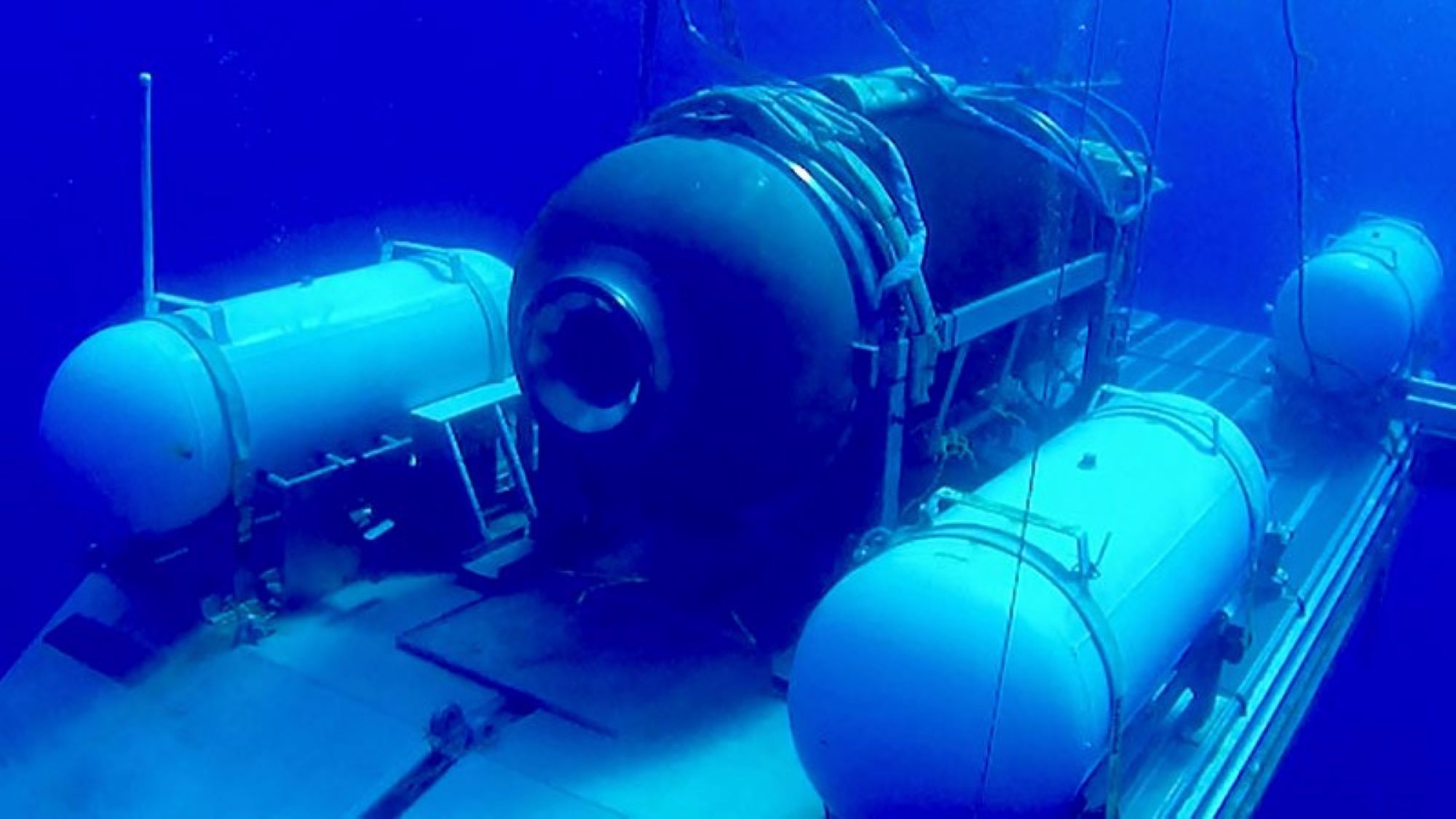Missing Titanic submersible: Banging sounds heard in search for lost sub Titan
The sounds were coming at 30-minute intervals, according to an internal email update sent by the Department of Homeland Security's National Operations Center, which could mean the passengers on board are still alive.

Banging sounds coming at 30-minute intervals have been heard in the search for the missing Titanic-tourism submersible, according to Rolling Stone, which cited an internal email update sent by the Department of Homeland Security's National Operations Center.
The detection of "sounds" was announced by the U.S. Coast Guard (USCG) Northeast early Wednesday (June 21), but it has not been confirmed whether they are coming from the missing vessel with five people on board.
"Canadian P-3 aircraft detected underwater noises in the search area," USCG Northeast tweeted. "As a result, ROV [remotely operated vehicle] operations were relocated in an attempt to explore the origin of the noises. Those ROV searches have yielded negative results but continue."
Canadian P-3 aircraft detected underwater noises in the search area. As a result, ROV operations were relocated in an attempt to explore the origin of the noises. Those ROV searches have yielded negative results but continue. 1/2June 21, 2023
The OceanGate Titan submersible went missing on Sunday (June 18) around 1 hour and 45 minutes into its 2-hour descent to the Titanic wreckage in the North Atlantic Ocean. As of 5 a.m. ET Wednesday morning, the submersible has less than 30 hours of oxygen remaining.
What happened to the submersible is unclear. Possible scenarios include power loss, getting snagged on a piece of the Titanic or an implosion, potentially from a defect in the sub's shape or build. The latter would mean that the five people on board — British explorer Hamish Harding, British-Pakistani businessman Shahzada Dawood and his son Suleman, former French navy diver Paul-Henri Nargeolet and Stockton Rush, chief executive and founder of OceanGate Expeditions, the company running the expedition — are unlikely to be alive.
However, the discovery of sounds could mean that the passengers may still be alive, and search efforts are now focusing on the area they appear to be coming from.
David Gallo, an American oceanographer who co-led an expedition to create a detailed map of the Titanic wreckage, told CNN the search for the submersible must now ramp up. "Time is of the essence because once you ... have an area where you know that the bangs are coming from ... you need to get assets there — submarines and robots — over that spot to investigate," Gallo said.
Get the world’s most fascinating discoveries delivered straight to your inbox.
"You can't wait to slowly prove that there is something there. You should assume that there is something there, and move things now because time is running out."

According to the email seen by Rolling Stone, the 30-minute bangs were detected by a Boeing P-8 Poseidon — a maritime patrol and reconnaissance aircraft that has underwater detection abilities from the air. Sonobuoys — small buoys that can perform underwater acoustic research — were then deployed. "The P8 heard banging sounds in the area every 30 minutes. Four hours later additional sonar was deployed and banging was still heard," the email said.
In an email to Live Science after the banging sounds were detected, Nicolai Roterman — a deep-sea ecologist and marine biologist at the University of Portsmouth in the U.K. — said the 30-minute intervals would "certainly be consistent with the idea of a trapped crew trying to contact the outside world, while at the same time conserving energy and therefore oxygen."
He added: "If this is the case, then it would indicate that the submersible is on the seafloor and either the system for jettisoning weight has failed, or Titan is snagged or trapped somehow.”
Retrieving a stricken submersible
In a statement released before the detection of sounds was announced, Roterman said: "If the submersible is intact but unable to jettison weight or is snagged on the seafloor, the challenges for rescue become more acute, even if Titan is found. There are no submersibles that I’m aware of capable of rescuing people from a submersible at the depth of the Titanic (3,800 m) [12,500 ft]. However, it could conceivably be possible for an ROV to help un-snag the Titan, or to attach a tether of some sort.
"Whether or not retrieving a submersible from 3,800 m depth is practical is another matter, given the roughly 10-tonne [11 short tons] displacement of Titan and the kilometers of heavy cable required, a very powerful winch would be needed… I’m unaware of any submersible retrieval from such depths."
Roterman said that if the passengers are still alive on the seafloor, it would be extremely still and — if a power failure has occurred — very cold.
"If they have no power and no auxiliary systems, they will be in darkness as well. Because the hull will be cold under such conditions, condensation from breath will start to collect on the inside of the hull, which can be unnerving," Roterman said. "The conditions are cramped with no room for standing up straight or stretching out, which can lead to numbness and cramp in the limbs. Given the situation, a big challenge for the occupants of Titan will be to maintain composure and not to panic, so as to prolong their air supply."

Hannah Osborne is the planet Earth and animals editor at Live Science. Prior to Live Science, she worked for several years at Newsweek as the science editor. Before this she was science editor at International Business Times U.K. Hannah holds a master's in journalism from Goldsmith's, University of London.


